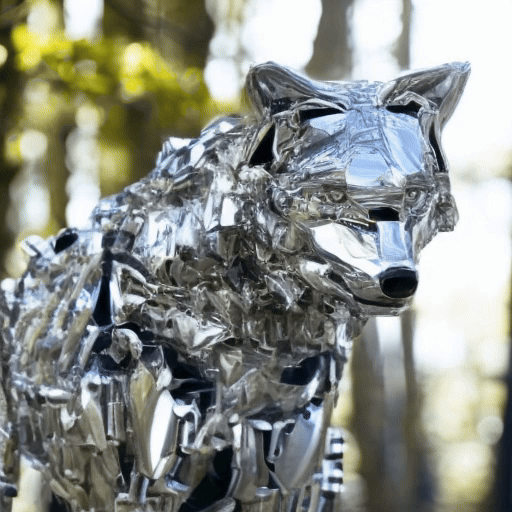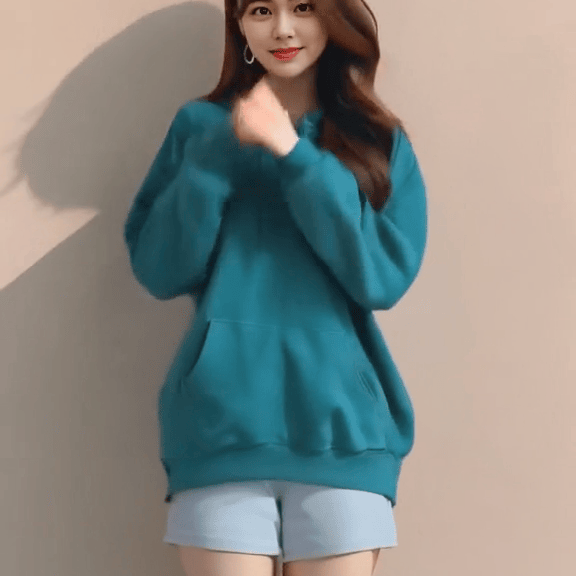st-mfnet
Maintainer: zsxkib

43

| Property | Value |
|---|---|
| Run this model | Run on Replicate |
| API spec | View on Replicate |
| Github link | View on Github |
| Paper link | View on Arxiv |
Create account to get full access
Model overview
The st-mfnet is a Spatio-Temporal Multi-Flow Network for Frame Interpolation developed by researchers at the University of Bristol. It is designed to increase the framerate of videos by generating additional intermediate frames, which can be useful for various applications such as video editing, gaming, and virtual reality. The model is similar to other video frame interpolation models like tokenflow and xmem-propainter-inpainting, which also aim to enhance video quality by creating new frames.
Model inputs and outputs
The st-mfnet model takes a video as input and generates a new video with increased framerate. The model can maintain the original video duration or adjust the framerate to a custom value, depending on the user's preference.
Inputs
- mp4: An MP4 video file to be processed.
- framerate_multiplier: Determines how many intermediate frames to generate between original frames. For example, a value of 2 will double the frame rate, and 4 will quadruple it.
- keep_original_duration: If set to
True, the enhanced video will retain the original duration, with the frame rate adjusted accordingly. If set toFalse, the frame rate will be set based on thecustom_fpsparameter. - custom_fps: The desired frame rate (frames per second) for the enhanced video, used only when
keep_original_durationis set toFalse.
Outputs
- Video: The enhanced video with increased framerate.
Capabilities
The st-mfnet model is capable of generating high-quality intermediate frames that can significantly improve the smoothness and visual quality of videos, especially those with fast-moving objects or camera panning. The model uses a novel Spatio-Temporal Multi-Flow Network architecture to capture both spatial and temporal information, resulting in more accurate frame interpolation compared to simpler approaches.
What can I use it for?
The st-mfnet model can be used in a variety of video-related applications, such as:
- Video Editing: Increasing the framerate of existing footage to create smoother slow-motion effects or improve the visual quality of fast-paced action sequences.
- Gaming and Virtual Reality: Enhancing the fluidity and responsiveness of video games and VR experiences by generating additional frames.
- Video Compression: Reducing file sizes by storing videos at a lower framerate and using the
st-mfnetmodel to interpolate the missing frames during playback.
Things to try
One interesting way to use the st-mfnet model is to experiment with different framerate_multiplier values to find the optimal balance between visual quality and file size. A higher multiplier will result in a smoother video, but may also lead to larger file sizes. Additionally, you can try using the model on a variety of video content, such as sports footage, animation, or documentary films, to see how it performs in different scenarios.
This summary was produced with help from an AI and may contain inaccuracies - check out the links to read the original source documents!
Related Models

film-frame-interpolation-for-large-motion

43
film-frame-interpolation-for-large-motion is a state-of-the-art AI model for high-quality frame interpolation, particularly for videos with large motion. It was developed by researchers at Google and presented at the European Conference on Computer Vision (ECCV) in 2022. Unlike other approaches, this model does not rely on additional pre-trained networks like optical flow or depth estimation, yet it achieves superior results. The model uses a multi-scale feature extractor with shared convolution weights to effectively handle large motions. The film-frame-interpolation-for-large-motion model is similar to other frame interpolation models like st-mfnet, which also aims to increase video framerates, and lcm-video2video, which performs fast video-to-video translation. However, this model specifically focuses on handling large motions, making it well-suited for applications like slow-motion video creation. Model inputs and outputs The film-frame-interpolation-for-large-motion model takes in a pair of images (or frames from a video) and generates intermediate frames between them. This allows transforming near-duplicate photos into slow-motion footage that looks like it was captured with a video camera. Inputs mp4**: An MP4 video file for frame interpolation num_interpolation_steps**: The number of steps to interpolate between animation frames (default is 3, max is 50) playback_frames_per_second**: The desired playback speed in frames per second (default is 24, max is 60) Outputs Output**: A URI pointing to the generated slow-motion video Capabilities The film-frame-interpolation-for-large-motion model is capable of generating high-quality intermediate frames, even for videos with large motions. This allows smoothing out jerky or low-framerate footage and creating slow-motion effects. The model's single-network approach, without relying on additional pre-trained networks, makes it efficient and easy to use. What can I use it for? The film-frame-interpolation-for-large-motion model can be particularly useful for creating slow-motion videos from near-duplicate photos or low-framerate footage. This could be helpful for various applications, such as: Enhancing video captured on smartphones or action cameras Creating cinematic slow-motion effects for short films or commercials Smoothing out animation sequences with large movements Things to try One interesting aspect of the film-frame-interpolation-for-large-motion model is its ability to handle large motions in videos. Try experimenting with high-speed footage, such as sports or action scenes, and see how the model can transform the footage into smooth, slow-motion sequences. Additionally, you can try adjusting the number of interpolation steps and the desired playback frames per second to find the optimal settings for your use case.
Updated Invalid Date

tokenflow

1
TokenFlow is a framework that enables consistent video editing using a pre-trained text-to-image diffusion model, without any further training or finetuning. It builds upon key observations that consistency in the edited video can be obtained by enforcing consistency in the diffusion feature space. The method propagates diffusion features based on inter-frame correspondences to preserve the spatial layout and dynamics of the input video, while adhering to the target text prompt. This approach contrasts with similar models like consisti2v, which focuses on enhancing visual consistency for I2V generation, and stable-video-diffusion, which aims to generate high-quality videos from text. Model inputs and outputs TokenFlow is designed for structure-preserving video editing. The model takes in a source video and a target text prompt, and generates a new video that adheres to the prompt while preserving the spatial layout and dynamics of the input. Inputs Video**: The input video to be edited Inversion Prompt**: A text description of the input video (optional) Diffusion Prompt**: A text description of the desired output video Negative Diffusion Prompt**: Words or phrases to avoid in the output video Outputs Edited Video**: The output video that reflects the target text prompt while maintaining the consistency of the input video Capabilities TokenFlow leverages a pre-trained text-to-image diffusion model to enable text-driven video editing without additional training. It can be used to make localized and global edits that change the texture of existing objects or augment the scene with semi-transparent effects (e.g., smoke, fire, snow). What can I use it for? The TokenFlow framework can be useful for a variety of video editing applications, such as: Video Augmentation**: Enhancing existing videos by adding new elements like visual effects or changing the appearance of objects Video Retouching**: Improving the quality and consistency of videos by addressing issues like lighting, texture, or composition Video Personalization**: Customizing videos to match a specific style or theme by aligning the content with a target text prompt Things to try One key aspect of TokenFlow is its ability to preserve the spatial layout and dynamics of the input video while editing. This can be particularly useful for creating seamless and natural-looking video edits. Experiment with a variety of text prompts to see how the model can transform the visual elements of a video while maintaining the overall structure and flow.
Updated Invalid Date

frame-interpolation

259
The frame-interpolation model, developed by the Google Research team, is a high-quality frame interpolation neural network that can transform near-duplicate photos into slow-motion footage. It uses a unified single-network approach without relying on additional pre-trained networks like optical flow or depth estimation, yet achieves state-of-the-art results. The model is trainable from frame triplets alone and uses a multi-scale feature extractor with shared convolution weights across scales. The frame-interpolation model is similar to the FILM: Frame Interpolation for Large Motion model, which also focuses on frame interpolation for large scene motion. Other related models include stable-diffusion, a latent text-to-image diffusion model, video-to-frames and frames-to-video, which split a video into frames and convert frames to a video, respectively, and lcm-animation, a fast animation model using a latent consistency model. Model inputs and outputs The frame-interpolation model takes two input frames and the number of times to interpolate between them. The output is a URI pointing to the interpolated frames, including the input frames, with the number of output frames determined by the "Times To Interpolate" parameter. Inputs Frame1**: The first input frame Frame2**: The second input frame Times To Interpolate**: Controls the number of times the frame interpolator is invoked. When set to 1, the output will be the sub-frame at t=0.5; when set to > 1, the output will be an interpolation video with (2^times_to_interpolate + 1) frames, at 30 fps. Outputs Output**: A URI pointing to the interpolated frames, including the input frames. Capabilities The frame-interpolation model can transform near-duplicate photos into slow-motion footage that looks as if it was shot with a video camera. It is capable of handling large scene motion and achieving state-of-the-art results without relying on additional pre-trained networks. What can I use it for? The frame-interpolation model can be used to create high-quality slow-motion videos from a set of near-duplicate photos. This can be particularly useful for capturing dynamic scenes or events where a video camera was not available. The model's ability to handle large scene motion makes it well-suited for a variety of applications, such as creating cinematic-quality videos, enhancing surveillance footage, or generating visual effects for film and video production. Things to try With the frame-interpolation model, you can experiment with different levels of interpolation by adjusting the "Times To Interpolate" parameter. This allows you to control the number of in-between frames generated, enabling you to create slow-motion footage with varying degrees of smoothness and detail. Additionally, you can try the model on a variety of input image pairs to see how it handles different types of motion and scene complexity.
Updated Invalid Date

mimic-motion

1
MimicMotion is a powerful AI model developed by Tencent researchers that can generate high-quality human motion videos with precise control over the movement. Compared to previous video generation methods, MimicMotion offers several key advantages, including enhanced temporal smoothness, richer details, and the ability to generate videos of arbitrary length. The model leverages a confidence-aware pose guidance system and a progressive latent fusion strategy to achieve these improvements. The MimicMotion framework is closely related to other generative AI models focused on video synthesis, such as FILM: Frame Interpolation for Large Motion and Live Speech Portraits: Real-Time Photorealistic Talking-Head Animation. These models also aim to generate high-quality video content with varying levels of control and realism. Model inputs and outputs MimicMotion takes several inputs to generate the desired video output. These include a reference motion video, an appearance image, and various configuration parameters like seed, resolution, frames per second, and guidance strength. The model then outputs a video file that mimics the motion of the reference video while adopting the visual appearance of the provided image. Inputs Motion Video**: A reference video file containing the motion to be mimicked Appearance Image**: A reference image file for the appearance of the generated video Seed**: A random seed value to control the stochastic nature of the generation process Chunk Size**: The number of frames to generate in each processing chunk Resolution**: The height of the output video in pixels (width is automatically calculated) Sample Stride**: The interval for sampling frames from the reference video Frames Overlap**: The number of overlapping frames between chunks for smoother transitions Guidance Scale**: The strength of guidance towards the reference motion Noise Strength**: The strength of noise augmentation to add variation Denoising Steps**: The number of denoising steps in the diffusion process Checkpoint Version**: The version of the pre-trained model to use Outputs Video File**: The generated video that mimics the motion of the reference video and adopts the appearance of the provided image Capabilities MimicMotion demonstrates impressive capabilities in generating high-quality human motion videos. The model's confidence-aware pose guidance system ensures temporal smoothness, while the regional loss amplification technique based on pose confidence helps maintain the fidelity of the generated images. Additionally, the progressive latent fusion strategy allows the model to generate videos of arbitrary length without excessive resource consumption. What can I use it for? The MimicMotion model can be a valuable tool for a variety of applications, such as video game character animations, virtual reality experiences, and special effects in film and television. The ability to precisely control the motion and appearance of generated videos opens up new possibilities for content creation and personalization. Creators and developers can leverage MimicMotion to enhance their projects with high-quality, custom-generated human motion videos. Things to try One interesting aspect of MimicMotion is the ability to manipulate the guidance scale and noise strength parameters to find the right balance between adhering to the reference motion and introducing creative variations. By experimenting with these settings, users can explore a range of motion styles and visual interpretations, unlocking new creative possibilities. Additionally, the model's capacity to generate videos of arbitrary length can be leveraged to create seamless, looping animations or extended sequences that maintain high-quality visual and temporal coherence.
Updated Invalid Date